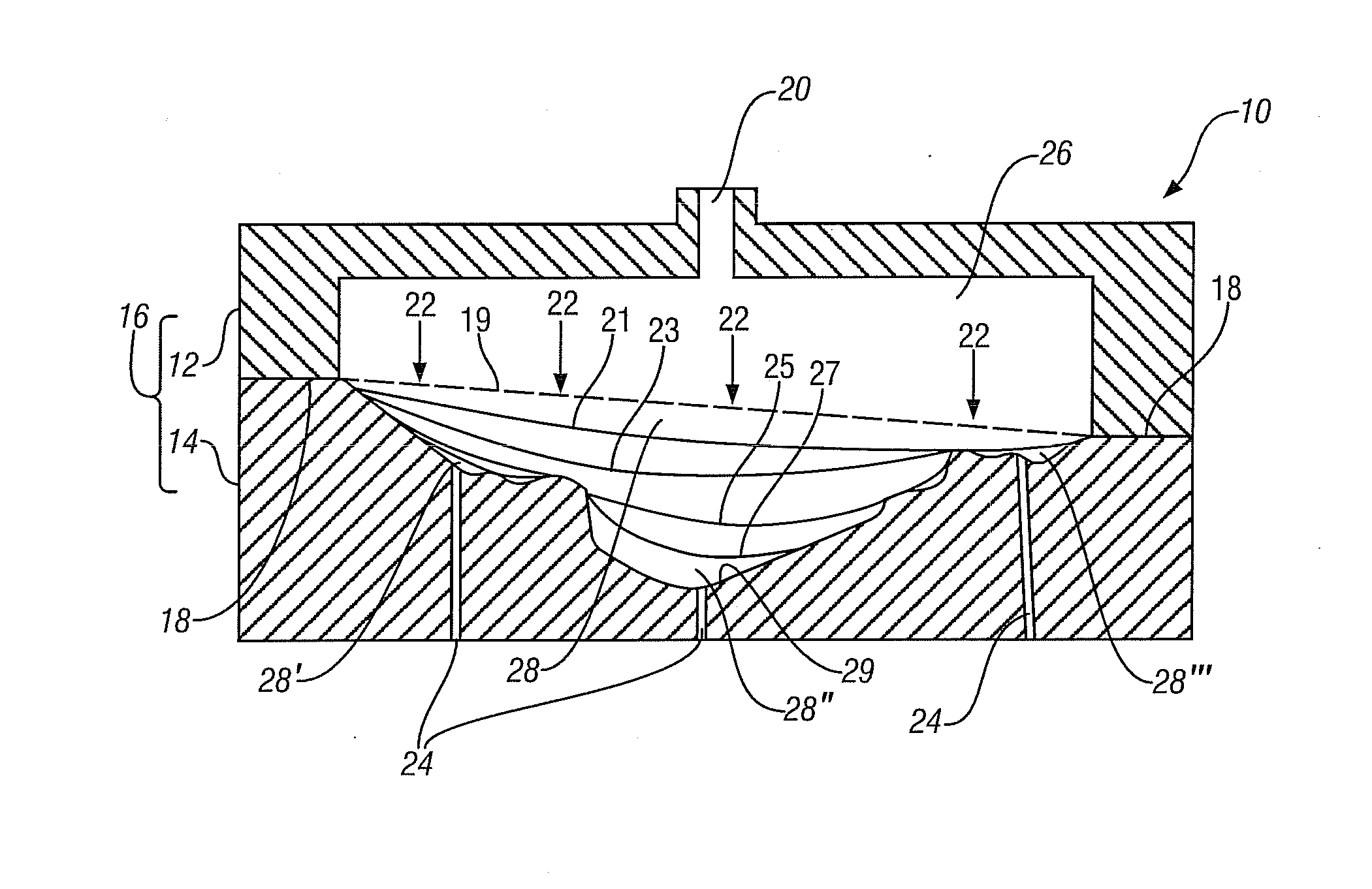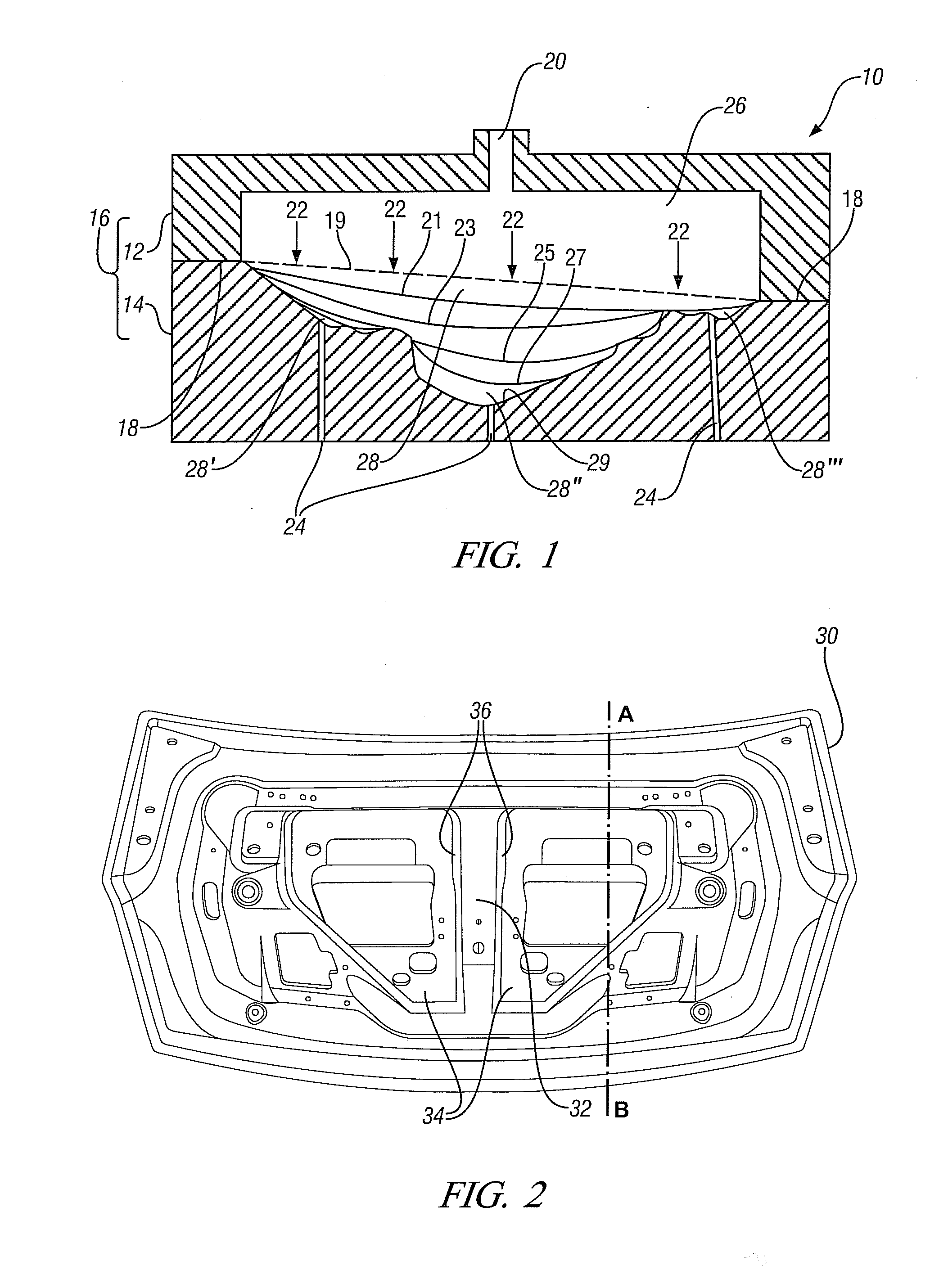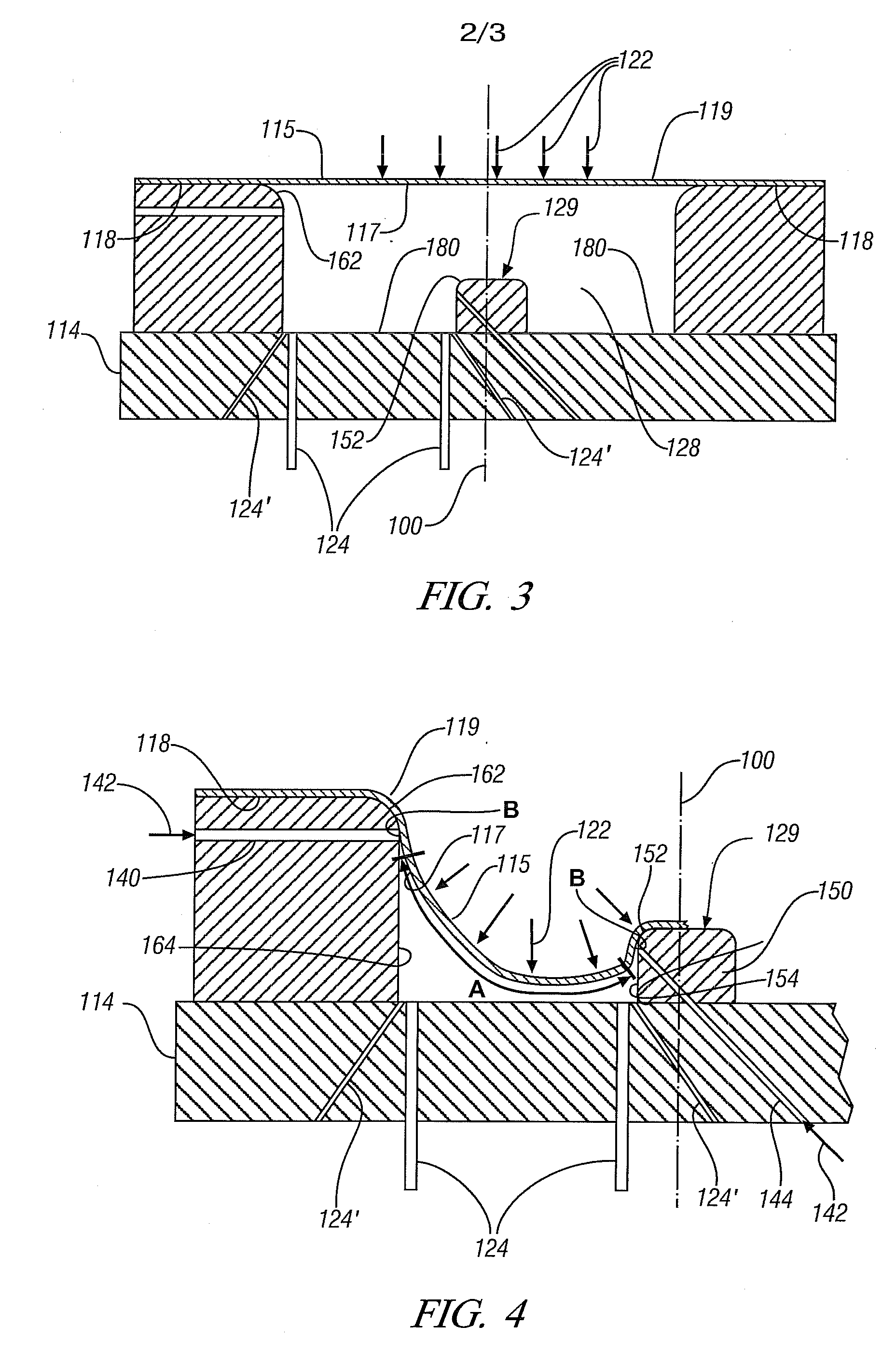Fluid cooling during hot-blow-forming of metal sheets and tubes
- Summary
- Abstract
- Description
- Claims
- Application Information
AI Technical Summary
Benefits of technology
Problems solved by technology
Method used
Image
Examples
Embodiment Construction
[0019]This invention is especially useful in hot-blow-forming of light metal alloys such as aluminum-based alloys and magnesium based alloys which to not tend to be as formable as low carbon steel alloys. Some exemplary materials suitable for practice of hot-blow-forming include aluminum alloy AA5083 (composition in percentage by weight: Mg, 4.0-4.9; Mn, 0.4-1.0; Zn≦0.25; balance aluminum) and magnesium alloy AZ31B (composition in percentage by weight: Al, 2.5-3.5; Zn, 0.6-1.4; Mn, ≧0.2, balance magnesium). The AZ31 magnesium alloy may be hot-blow-formed in both the annealed (AZ31B—O) and half hard (AZ31B-H24) conditions.
[0020]Hot-blow-forming is a forming process in which a heated workpiece, typically in the form of a cold-rolled sheet or a tube, is progressively deformed by maintaining a pressure differential through the workpiece thickness for some period of time, typically ranging from 30 to 300 seconds. The deformation will be accompanied by the accumulation of strain, both in ...
PUM
| Property | Measurement | Unit |
|---|---|---|
| Thickness | aaaaa | aaaaa |
| Thickness | aaaaa | aaaaa |
| Temperature | aaaaa | aaaaa |
Abstract
Description
Claims
Application Information
 Login to View More
Login to View More - R&D
- Intellectual Property
- Life Sciences
- Materials
- Tech Scout
- Unparalleled Data Quality
- Higher Quality Content
- 60% Fewer Hallucinations
Browse by: Latest US Patents, China's latest patents, Technical Efficacy Thesaurus, Application Domain, Technology Topic, Popular Technical Reports.
© 2025 PatSnap. All rights reserved.Legal|Privacy policy|Modern Slavery Act Transparency Statement|Sitemap|About US| Contact US: help@patsnap.com



